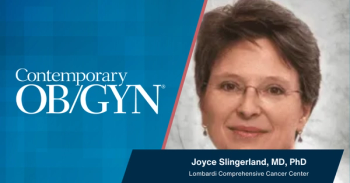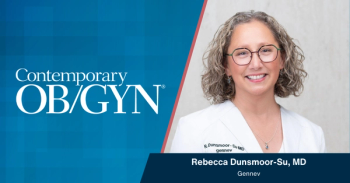
Contraception in the 4th & 5th Decade
In general decline in fertility is associated with increasing age, most notably for women. Women are born with a fixed number of oocytes which diminish with age leaving few if any capable of fertilization in the peri menopause.
Available for download in Word Document format
“Contraception should be used on every conceivable occasion”
Spike Milligan
Introduction
In general decline in fertility is associated with increasing age, most notably for women. Women are born with a fixed number of oocytes which diminish with age leaving few if any capable of fertilization in the peri menopause.
Non the less women continue to have a sexual life long after their desire to have children and there is probably a no more compliant group than these women, who are all well aware of the inherent problem of pregnancy at this age, both for themselves and for the foetus.
The Need for Contraception
There is a high degree of foetal abnormality, especially in older women due in part to the increasing frequency of trisomies as one gets older. Clinically recognised abortion occurs in only 12% of women younger than the age of twenty but the incidence more than doubles in women over 40 years and the overall abortion risk (recognised and unrecognised) in women over 40 years is 75% and more than two thirds or 70% of these are due to chromosomal abnormalities. 25% of pregnancies in theory at least, in this age group go to term - the potential for a chromosomal abnormality of which downs Syndrome is the most noted, is very high.
As with ageing of the ovaries ageing of the testes influences both the individual and the progeny. From around the age of thirty the number and quality of the spermatozoa begin to decline with endocrine function diminishing some ten years later. Paternal ageing may therefore be responsible for chromosomal abnormalities; it may also be the source of dominant and recessive mutations which will manifest themselves in the descendants. Chromosomal abnormalities are not the only problem; in a study from the Rotunda Hospital, Milner et al found a significant increase of gestational diabetes, ante partum haemorrhage, foetal distress, pre-maturity low birth weight and peri-natal mortality. With statistics like this contraception for both men and women in their 40’s becomes a public health issue.
Contraception Currently on Offer
Progesterone only pills become more efficacious with age but there are the attendant problems of poor cycle control with irregular bleeding or no bleeding at all Irregular cycles at this time may only serve to create more tension and anxiety in the relationship when fear of pregnancy becomes more real due to the increased risk of foetal abnormality. Amennorhea may also pose a problem.
Good counselling might reassure the woman that she is not pregnant but there is the anxiety regarding osteoporosis after 5 years of amenorrhea. The same applies to Depo Provera and Norplant. Added to this is the local problem of the progestagenic effects on the cervix leading to thickened cervical mucus thus making intercourse more difficult than it need be. On a more positive note progestagen only pills have a less suppressive effect on gonadotrophins. Raised FSH levels on two separate occasions in a woman using P.O.P. usually indicates ovarian failure hence the biochemical diagnosis of the menopause is not interfered with. On the other hand the effect of the long term use of progestagens on lipids and on bone mass have yet to be fully evaluated.
IUCD’s may well be another option but IUCD’s are not without their problem relating to insertion and subsequent sequelae like spotting and cramps and menorrhagia. However, they are a good way to receive progestagens at the time of the peri-menopause and after without the nuisance side effects, especially in women with menorrhagia.
Barrier methods, particularly condoms, are an oft suggested method of contraception for peri-menopausal couples. However when couples have been used to more aesthetically pleasing contraception condoms and diaphragms may not only prove difficult to use but can be off-putting as well. Indeed regular users of diaphragms often experience difficulty with insertion due to an increase in vaginal dryness and concomitant cystitis. What would be the benefits of using a combined oral contraceptive for the pre-menopausal women? Advantages of Combined Oral Contraception
Apart from the primary advantage of effective contraception in a very compliant population major advantage would be cycle control. There would be fewer hospital admissions for curettage and perhaps fewer hysterectomies. It is reasonable to assume that oral combined contraceptives protect against hot flushes. They may also protect against osteoporosis. Other benefits of oral contraceptives, like protection against ovarian cysts, endometrial and ovarian cancer are the same in the age group above 40 as among younger women.
Menopause Diagnosis
It is known that 9% of women over the age of 45 years with a history of 6 months amenorrhea will resume menstruation and that ovulation can occur right up o the menopause in spite of post menopausal hormone profiles.
In 1988 the New Zealand study of Metcalf suggested that as long as menstruation remains regular, women over the age of 40 years continue to ovulate in 98% of cycles.
Kaufert in interviews with peri-menopausal women over a 3 year period provided evidence that there is no steady progress from pre- to post menopause. Indeed women appeared to oscillate between the peri- and the pre-menopausal state. Hence post menopausal bio-chemical parameters were no guarantee of a post menopausal state. The most sensitive marker for declining ovarian function in women with regular cycles is an elevated FSH in the follicular phase. Lenton et al found that FSH levels rise dramatically from 40 - 41 years such that by the age of 46 - 47 concentrations had almost doubled with a further increase in the 48 - 49 age group. On the other hand mean concentrations of LH remain static until the 49 - 49 age band when they are doubled. The oestrogen containing oral contraceptive prevents ovulation by the suppression of gondotrophin secretion and will mask the symptoms of ovarian failure as the progestagen component of the combined pill will ensure regular monthly withdrawal bleeds irrespective of menopausal status. In the pre-menopause LH and FSH are suppressed by at least 50% and may be undetectable by current assays. In post menopausal women an 80-% suppression of FSH has been reported for women given 50 micrograms of Ethinyl oestradiol. The question of menopause therefore arises in women who have become amenorrheic on stopping the pill.
FSH levels are of value here providing sufficient time has elapsed since stopping the pill to allow for recovery of the endogenous gonadotrophins, There are data to show that gonadotrophin levels return to normal after 1 week. However the women is not likely to present for 6 - 8 weeks after stopping the pill when the FSH levels should no longer be affected.
Use of oral contraception masks the menopause and the correct time for transition from contraception to HRT may be difficult.
Since standard HRT is not a contraceptive there are two approaches to contraception currently available Clinically contraception should be advised up to the age of 55 years while women are taking HRT. Alternatively while off all hormonal preparations two FSH levels 4 - 8 weeks apart, together with amennhorea are taken to mean significant loss of ovarian function. Current recommendations then are that in the over 50’s contraception be used for 1 year following one year of amenorrhea and for two years in younger women. Very little is mentioned in the literature regarding oral contraception at this transient time, although the FDA have no upper limit on the use of oral contraception at this time.
It is estimated that approximately 9% of women taking HRT and fewer still take it for any significant length of time. Most stop after three months perhaps then we should be advocating combined oral contraception preparations not only for their contraceptive effects but for the very real beneficial side effects that are not diminished in this age group.
Conclusion
The benefits of combined oral contraception are not in doubt regardless of age. However, we must weigh up the benefits of effective contraception which alleviates menopausal symptoms and perhaps has bone sparing properties against the cardio-vascular risks in women over the age of 45 years. The risk of pregnancy, delivery or abortion should not be underestimated. Contrary to popular belief women over a certain age do have intercourse. Maybe they don’t get pregnant so easily but they need more effective contraception not less for the sake of their health, if not their sanity.
References:
References
1) Kruitwagen R.F.P.M, Poels, L.G. Willemsen, W.N.P., Jap, P.H.K., Thomas, C.M.G. and Roland, R. (1991) Endometrial epitheleal cells in peritoneal fluid during the early follicular phase. Fertil. Steril.,55, 297.
2) Jenkins, S.,Olive, D.L. and Haney, A.F. (1986) Endometriosis: pathogenic implications of the anatomic distribution. Obstet. Gynecol., 67, 335
3) Milner, M., Barry-Kinsella C., Unwin, A. and harrison, R.F (1992). The impact of maternal ageing on pregnancy and it’s outcome. Int. J.Gynaecol. Obstet., 38, 281-6
4) Auroux M. (1995) Fertility and Sterility: A current Overview, pp. 321-2. (Carnforth, U.K; Parthenon Publishing.)
5) Guillebaud, J. (1993). Contraception: Your questions Answered, 2nd edn., pp 228-34 (London: Churchill Livingston)
6) Whitehead M.I. and Godfree, V. (1992) Hormone Replacement Therapy: Your Questioned Answered, pp. 217-18 (Edinburgh: Churchill Livingstone)
7) Nesheim, B.I. (1994) Contraception towards the menopause. Lake-medelsverket, Sweden, 2 177-83
8) Volpe, A., Silfieri, M., Genazzani, A.D and Genazzani, A.R. (1993) Contraception in older women. Contraception, 47, 29-39
Newsletter
Get the latest clinical updates, case studies, and expert commentary in obstetric and gynecologic care. Sign up now to stay informed.










